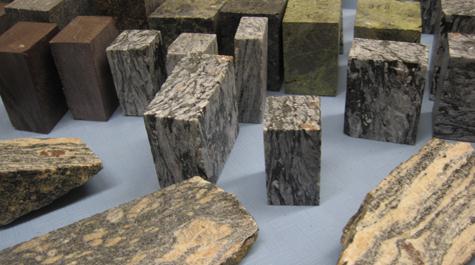Geologist to rock the Tack Faculty Lecture Series on April 17
The faculty members of the Department of Geology at William & Mary were gathered together for a departmental retreat when the earthquake hit.
It turned out to be a 5.8 magnitude quake, a good solid rattling of the earth that caused landslides 150 miles away from its Louisa County epicenter and cracked the Washington Monument. Department Chair Chuck Bailey said the August 23, 2011 quake also brought a hasty adjournment to the geologists’ retreat.
“Our discussion was interrupted,” Bailey says, raising an eyebrow, “by a motion from the floor.”
That’s a good example of the wit in store for attendees of Bailey’s presentation of “Finding Faults in Old Virginia,” the latest talk in William & Mary’s Tack Faculty Lecture Series. Along with the wit, there will be plenty of geological wisdom on tap at the presentation slated for 7 p.m. April 17 in Williamsburg’s Kimball Theatre. It’s free and open to the public.
“We are excited to continue the Tack Faculty Lecture Series and celebrate the intellectual life of William & Mary by showcasing the excellence of our faculty,” said Provost Michael R. Halleran, the driving force behind the establishment of the series. “Chuck Bailey has a way of explaining the intricacies of the earth’s movements in intriguing and fun ways.”
The idea of the Tack Faculty Lecture Series, Halleran explained, is to offer an opportunity once each semester for the campus and broader community to attend a lecture by a faculty member on a topic related to his or her research. The series kicked off in spring of 2012 with a talk on the effects of avian biodiversity on West Nile and other vector-borne diseases. This strong start was followed by a fall presentation on humor. Bailey’s talk will be the third in the series.
Halleran also announced the speakers for the next two installments of the series. Deborah K. Steinberg, professor of marine science, will give the fall 2013 lecture. Legum Professor of History Scott Nelson is on tap for spring 2014.
Bailey is a member of the William & Mary Class of 1989 and received his master’s and Ph.D. degrees from Johns Hopkins University. He’s a structural geologist, which means that he studies the destructive creativity of the processes that both build up and tear down the Earth.
He says that he has spent much of the past year on “the Virginia earthquake circuit,” and expects that about a third of his talk will be devoted to description of the faults that lie deep under the Commonwealth and to Virginia earthquakes—past and future.
“The other part of what I want to do is show that Virginia and all of eastern North America is a collage of blocks of the earth’s crust that have been amalgamated over a long period of time,” he said. “Some of the blocks that make up what we now call Virginia came from places as far away as New England and likely South America, it is a dynamic and exciting story.”
The Kimball Theatre audience will learn about the ongoing research done by William & Mary undergraduates that sheds light on over a billion years of earth history and its relevance to the modern world.
The Tack Faculty Lecture Series has a begun tradition of audience engagement and Bailey says that his audience should expect the tradition to continue. He’s planning on passing around geological hors d’oeuvres—rock samples prepared to illustrate elements of his talk.
No tickets are required for “Finding Faults in Old Virginia,” but those planning to attend are asked to register at www.wm.edu/lecture .
















